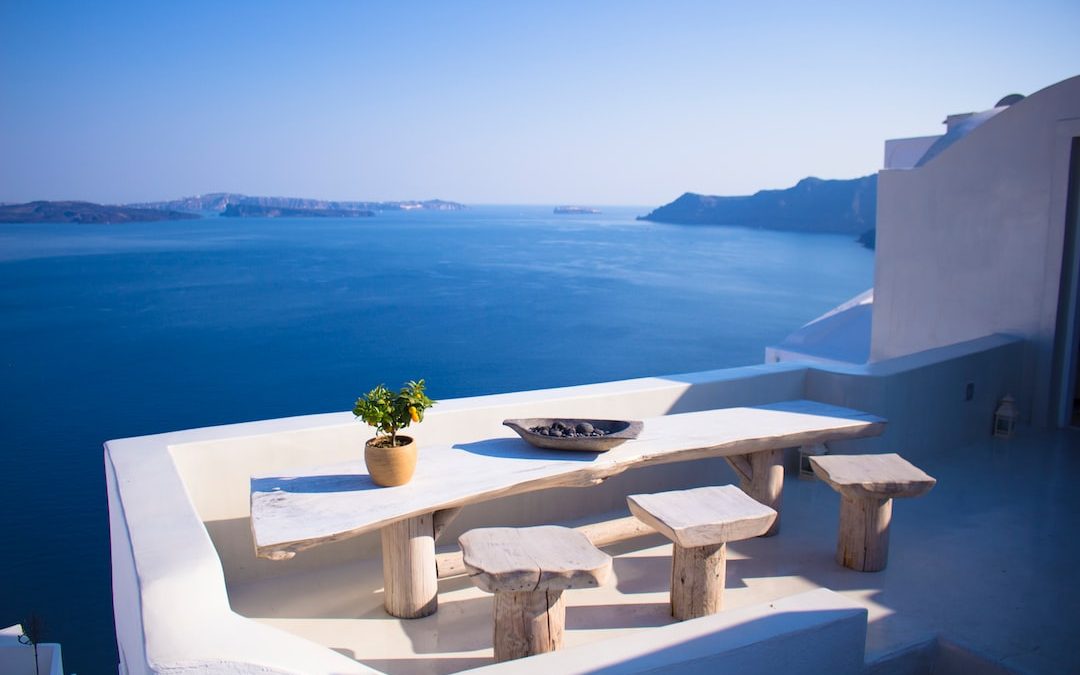Table of Contents
Exploring the Ancient Ruins of the Mediterranean
Introduction
The Mediterranean has long been a beacon of history and culture, having seen the rise of some of the world’s most influential empires and civilizations in human history. From the Greeks and Romans to the Phoenicians and Egyptians, many of the ancient sites in the Mediterranean have been preserved and remain standing today. Exploring these ruins is a unique way to experience the past, to learn about life and culture in earlier times and to gain greater appreciation for the people who lived in these societies. This blog post will explore some of the most captivating ancient ruins of the Mediterranean, taking a look at their history, culture and significance.
The Colosseum, Rome
The Colosseum is one of the most iconic ancient ruins of the Mediterranean, and one of the most recognizable structures in all of Rome. Built by the emperor Vespasian in 72 AD, the Colosseum was originally used for gladiatorial contests and public spectacles. It could hold up to 50,000 spectators and the seating arrangement was divided into four tiers, with the emperor and his family seated in the box closest to the arena. The Colosseum is a testament to the grandeur of the Roman Empire and its ability to construct such impressive structures.
Architecture and Design
The Colosseum is an elliptical structure made of stone and concrete, with three stories of columns and arches. It is divided into four levels, with the uppermost level reserved for the emperor and his family. The design of the Colosseum is an impressive feat of engineering, with arches and vaults that provide support and stability. The interior of the Colosseum is also decorated with marble, mosaics and sculptures, adding to the sense of grandeur and spectacle.
Death and Destruction
The Colosseum is also a reminder of the cruelty of the Roman Empire, as it was the site of many brutal gladiatorial contests and public executions. The Romans used the Colosseum to entertain the masses, often pitting men against animals for their amusement. The Colosseum is a powerful reminder of death and destruction, and a stark reminder of the human capacity for violence and cruelty.
Preservation and Restoration
The Colosseum has been preserved and restored over the centuries, with several major restoration projects undertaken in the 19th and 20th centuries. Today, the Colosseum is a protected UNESCO World Heritage Site and a popular tourist attraction.
The Acropolis, Athens
The Acropolis is an ancient citadel in Athens, Greece, that was once the center of the Greek city-state. It was built in the 5th century BC and is home to several iconic structures such as the Parthenon, the Erechtheion and the Temple of Athena Nike. The Acropolis is a symbol of ancient Greek culture and is one of the most visited archaeological sites in the world.
Architecture and Design
The Acropolis is a series of hilltop structures that were built in the 5th century BC. The most well-known of these is the Parthenon, a temple dedicated to the goddess Athena. The Parthenon is an impressive structure, made of marble and adorned with sculptures and decorative friezes. The other structures on the Acropolis are equally impressive, with intricate designs and intricate details.
History and Mythology
The Acropolis is steeped in mythology and legend. It was the site of a legendary battle between the gods and the giants, and it was here that Athena and Poseidon competed for the patronage of the city. The Acropolis was also the site of important historical events such as the signing of the Delian League in 478 BC.
Preservation and Restoration
The Acropolis has been preserved and restored over the centuries, with several major restoration projects undertaken in the 19th and 20th centuries. Today, the Acropolis is a protected UNESCO World Heritage Site and a popular tourist attraction.
The Temple of Apollo, Delphi
The Temple of Apollo at Delphi is an ancient Greek temple dedicated to the god Apollo. Built in the 4th century BC, the temple was once the site of the Oracle of Delphi, a sacred shrine where the god Apollo was said to speak through a priestess. The Temple of Apollo is a symbol of ancient Greek culture and is one of the most visited archaeological sites in the world.
Architecture and Design
The Temple of Apollo is a large temple complex that is made of stone and marble. It consists of several structures such as the main temple, the theater and the treasury. The main temple is adorned with sculptures, friezes and pediments, giving it a sense of grandeur and awe.
History and Mythology
The Temple of Apollo is steeped in mythology and legend. It was here that the Oracle of Delphi spoke the words of the god Apollo, offering guidance and wisdom to the ancient Greeks. The Temple of Apollo was also the site of several important historical events such as the signing of the Delian League in 478 BC.
Preservation and Restoration
The Temple of Apollo has been preserved and restored over the centuries, with several major restoration projects undertaken in the 19th and 20th centuries. Today, the Temple of Apollo is a protected UNESCO World Heritage Site and a popular tourist attraction.
The Mausoleum of Halicarnassus, Bodrum
The Mausoleum of Halicarnassus was a magnificent tomb built in the 4th century BC by the Persian ruler Mausolus. The structure was made of marble and adorned with sculptures and reliefs, making it one of the Seven Wonders of the Ancient World. Today, the ruins of the Mausoleum remain standing in the modern city of Bodrum, Turkey.
Architecture and Design
The Mausoleum of Halicarnassus was a grand structure made of marble and adorned with sculptures and reliefs. It consisted of a base, a podium and a pyramid-shaped roof, and it was the tallest structure in the ancient world. The sculptures and reliefs depicted scenes from Greek mythology, adding to the grandeur and beauty of the structure.
History and Mythology
The Mausoleum of Halicarnassus was built in honor of the Persian ruler Mausolus. It was believed that the structure was built to house his remains, although no evidence of this has been found. The Mausoleum was also praised by the ancient Greek historian Herodotus for its beauty and grandeur.
Preservation and Restoration
The Mausoleum of Halicarnassus has been preserved and restored over the centuries, with several major restoration projects undertaken in the 19th and 20th centuries. Today, the ruins of the Mausoleum remain standing in the modern city of Bodrum, Turkey.
The Temple of Zeus, Olympia
The Temple of Zeus at Olympia was a large temple complex dedicated to the god Zeus. Built in the 5th century BC, the temple was once the site of the ancient Olympic Games. The Temple of Zeus is an impressive structure that is a symbol of the power and influence of the ancient Greek gods and goddesses.
Architecture and Design
The Temple of Zeus is a large temple complex that consists of several structures such as the main temple, the altar and the treasuries. The main temple is a large rectangular structure made of marble and adorned with sculptures and reliefs. The other structures are equally impressive, with intricate designs and intricate details.
History and Mythology
The Temple of Zeus was a sacred site in ancient Greece, and it was here that the ancient Olympic Games were held. The temple was also the site of several important religious ceremonies, and it was believed to be the residence of the gods.
Preservation and Restoration
The Temple of Zeus has been preserved and restored over the centuries, with several major restoration projects undertaken in the 19th and 20th centuries. Today, the Temple of Zeus is a protected UNESCO World Heritage Site and a popular tourist attraction.
The Baths of Caracalla, Rome
The Baths of Caracalla were a large public bath complex built in Rome in the 2nd century AD. It was a place of leisure and luxury, and it was one of the largest bath complexes in the ancient world. The Baths of Caracalla are a reminder of the grandeur of the Roman Empire and the indulgence of its citizens.
Architecture and Design
The Baths of Caracalla were a large complex of baths and spas, consisting of several structures such as the main bath, the frigidarium and the tepidarium. The main bath was a large rectangular pool surrounded by marble columns and decorated with mosaics and sculptures. The other structures were also impressive, with intricate designs and intricate details.
History and Culture
The Baths of Caracalla were a place of leisure and luxury for the citizens of Rome. It was a place where people could go to relax, socialize and enjoy the indulgences of the Roman Empire. The Baths of Caracalla were also a symbol of the power and influence of the Roman Empire.
Preservation and Restoration
The Baths of Caracalla have been preserved and restored over the centuries, with several major restoration projects undertaken in the 19th and 20th centuries. Today, the Baths of Caracalla are a protected UNESCO World Heritage Site and a popular tourist attraction.
The Temple of Artemis, Ephesus
The Temple of Artemis was a temple built in the ancient Greek city of Ephesus. It was dedicated to the goddess Artemis and was one of the Seven Wonders of the Ancient World. The temple was an impressive feat of engineering and a symbol of the power and influence of the goddess Artemis.
Architecture and Design
The Temple of Artemis was a large temple complex that was made of marble and adorned with sculptures and reliefs. It consisted of a base, a podium and a pyramid-shaped roof, and it was the tallest structure in the ancient world. The sculptures and reliefs depicted scenes from Greek mythology, adding to the grandeur and beauty of the structure.
History and Mythology
The Temple of Artemis was a sacred site in ancient Greece, and it was believed to be the residence of the goddess Artemis. It was also the site of several important religious ceremonies, and it was believed to be the residence of the gods.
Preservation and Restoration
The Temple of Artemis has been preserved and restored over the centuries, with several major restoration projects undertaken in the 19th and 20th centuries. Today, the ruins of the Temple of Artemis remain standing in the modern city of Ephesus, Turkey.
The Great Pyramid of Giza, Egypt
The Great Pyramid of Giza is one of the most iconic ancient sites in the world. Built in the 4th century BC, the Great Pyramid was the largest of the three pyramids of Giza and is believed to be the burial site of the pharaoh Khufu. The Great Pyramid of Giza is a symbol of the power and influence of the ancient Egyptian civilization and is one of the most visited archaeological sites in the world.
Architecture and Design
The Great Pyramid of Giza is a large pyramid-shaped structure made of stone and adorned with reliefs and hieroglyphs. It is made of several different sections, with the main chamber being located at the center. The pyramid also has a number of underground chambers and tunnels, making it one of the most impressive structures in the ancient world.
History and Mythology
The Great Pyramid of Giza was built in the 4th century BC and is believed to be the burial site of the pharaoh Khufu. It was also a source of wonder and awe for the ancient Egyptians, and it is believed that the pyramid was built as a tomb for the gods.
Preservation and Restoration
The Great Pyramid of Giza has been preserved and restored over the centuries, with several major restoration projects undertaken in the 19th and 20th centuries. Today, the Great Pyramid of Giza is a protected UNESCO World Heritage Site and a popular tourist attraction.
Conclusion
Exploring the ancient ruins of the Mediterranean is a unique way to experience the past and to learn about the culture and history of these ancient societies. From the Colosseum in Rome to the Great Pyramid of Giza in Egypt, the Mediterranean is home to some of the most iconic and impressive ancient ruins in the world. This blog post has explored some of the most captivating ancient ruins in the Mediterranean, taking a look at their history, culture and significance.












